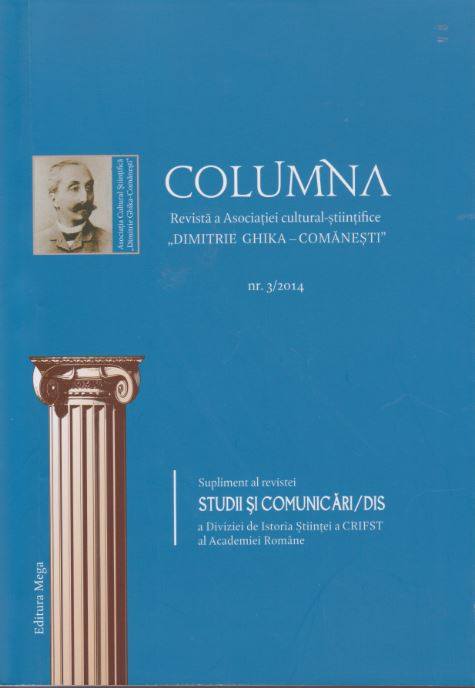Mărturii despre Enescu
Testimonials about Enescu
Author(s): Vasile Iscu-LăcătușuSubject(s): Cultural history, Music
Published by: Asociația Cultural Științifică „Dimitrie Ghika-Comănești”
Keywords: symphonic poem; rhapsody; opera; musician;
Summary/Abstract: Enescu was born in the village of Liveni (later renamed„George Enescu” in his honor), Dorohoi County at the time, today Botoşani County. He showed musical talent from early in his childhood. A child prodigy, Enescu began experimenting with composing at an early age. Several, mostly very short pieces survive, all of them for violin and piano. The earliest work of significant length bears the title Pămînt românesc (Romanian Land), and is somewhat pretentiously inscribed „opus for violin and piano by George Enescu, Romanian composer, aged five years and a quarter”. Shortly thereafter, his father presented him to the professor and composer Eduard Caudella. At the age of seven, he became the youngest student ever admitted to the Vienna Conservatory, where he studied with Joseph Hellmesberger, Jr., Robert Fuchs, and Sigismund Bachrich. At the age of 7, he was the second person ever admitted to this university by a dispensation of age (there was a regulation that stipulated that no person younger than 14 years could study at the Vienna Conservatory), only after Fritz Kreisler (in 1882, also at the age of 7) and the first non Austrian to do so. In 1891, the ten-year-old Enescu gave a private concert at the Court of Vienna, in the presence of Emperor Franz Joseph. Enescu then studied from 1895 to 1899 at the Conservatoire de Paris. André Gedalge said that he was „the only one who truly had ideas and spirit”. Many of Enescu’s works were influenced by Romanian folk music, his most popular compositions being the two Romanian Rhapsodies (1901–2), the opera Œdipe (1936), and the suites for orchestra.
Journal: COLUMNA
- Issue Year: 2014
- Issue No: 3
- Page Range: 117-131
- Page Count: 16
- Language: Romanian

